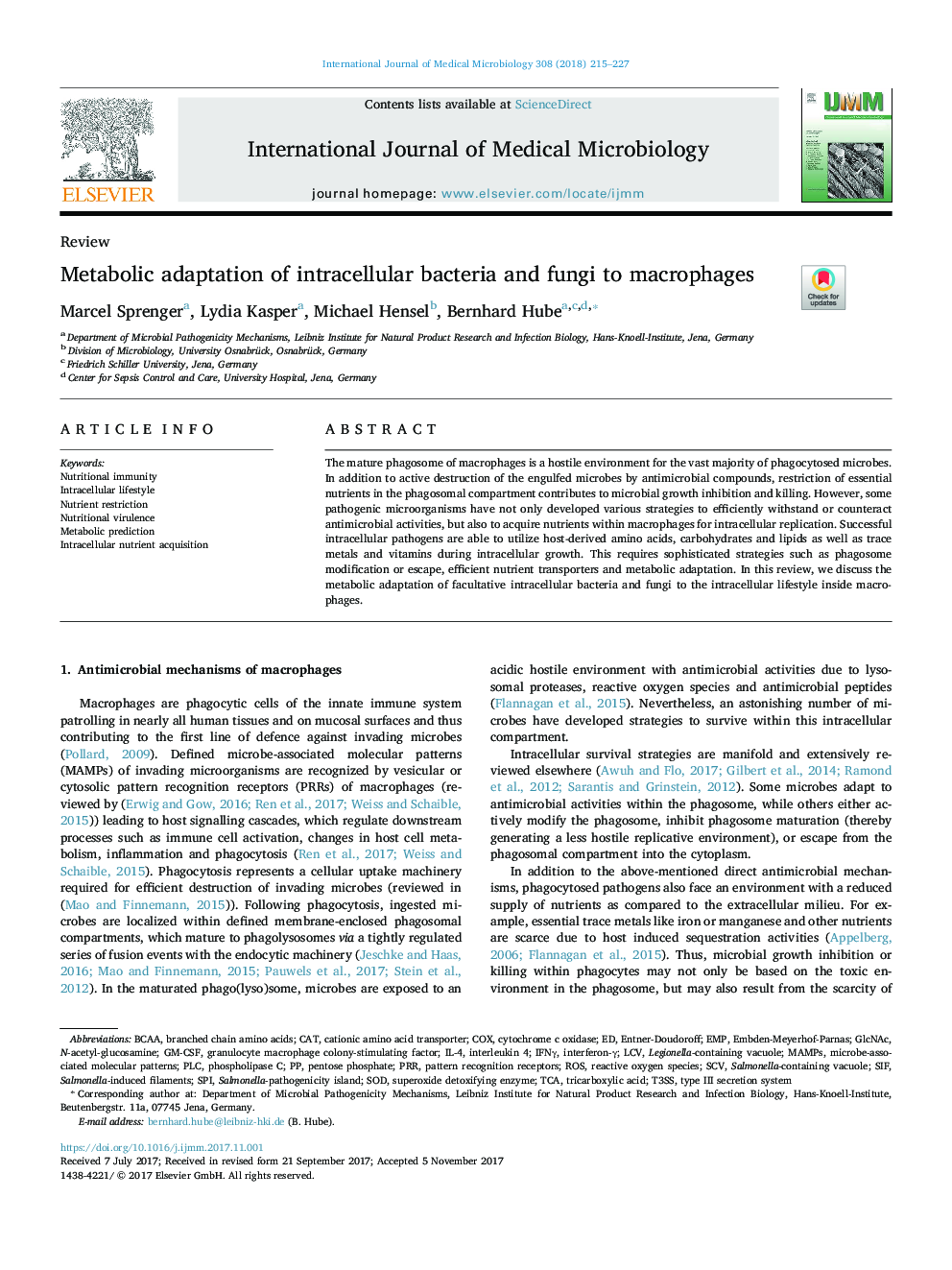| Article ID | Journal | Published Year | Pages | File Type |
|---|---|---|---|---|
| 8385097 | International Journal of Medical Microbiology | 2018 | 13 Pages |
Abstract
The mature phagosome of macrophages is a hostile environment for the vast majority of phagocytosed microbes. In addition to active destruction of the engulfed microbes by antimicrobial compounds, restriction of essential nutrients in the phagosomal compartment contributes to microbial growth inhibition and killing. However, some pathogenic microorganisms have not only developed various strategies to efficiently withstand or counteract antimicrobial activities, but also to acquire nutrients within macrophages for intracellular replication. Successful intracellular pathogens are able to utilize host-derived amino acids, carbohydrates and lipids as well as trace metals and vitamins during intracellular growth. This requires sophisticated strategies such as phagosome modification or escape, efficient nutrient transporters and metabolic adaptation. In this review, we discuss the metabolic adaptation of facultative intracellular bacteria and fungi to the intracellular lifestyle inside macrophages.
Keywords
COXLCVSCVT3SSIFNγPRRGM-CSFPLCSIFEMPIL-4TCACATGlcNAcSPIN-Acetyl-GlucosamineROSbranched chain amino acidstricarboxylic acidmicrobe-associated molecular patternsNutritional immunityinterferon-γInterleukin 4BCAAcationic amino acid transporterSODcytochrome c oxidaseType III secretion systemphospholipase CMAMPSgranulocyte macrophage colony-stimulating factorNutrient restrictionSalmonella-containing vacuolepentose phosphateReactive oxygen speciespattern recognition receptors
Related Topics
Life Sciences
Biochemistry, Genetics and Molecular Biology
Biochemistry, Genetics and Molecular Biology (General)
Authors
Marcel Sprenger, Lydia Kasper, Michael Hensel, Bernhard Hube,
